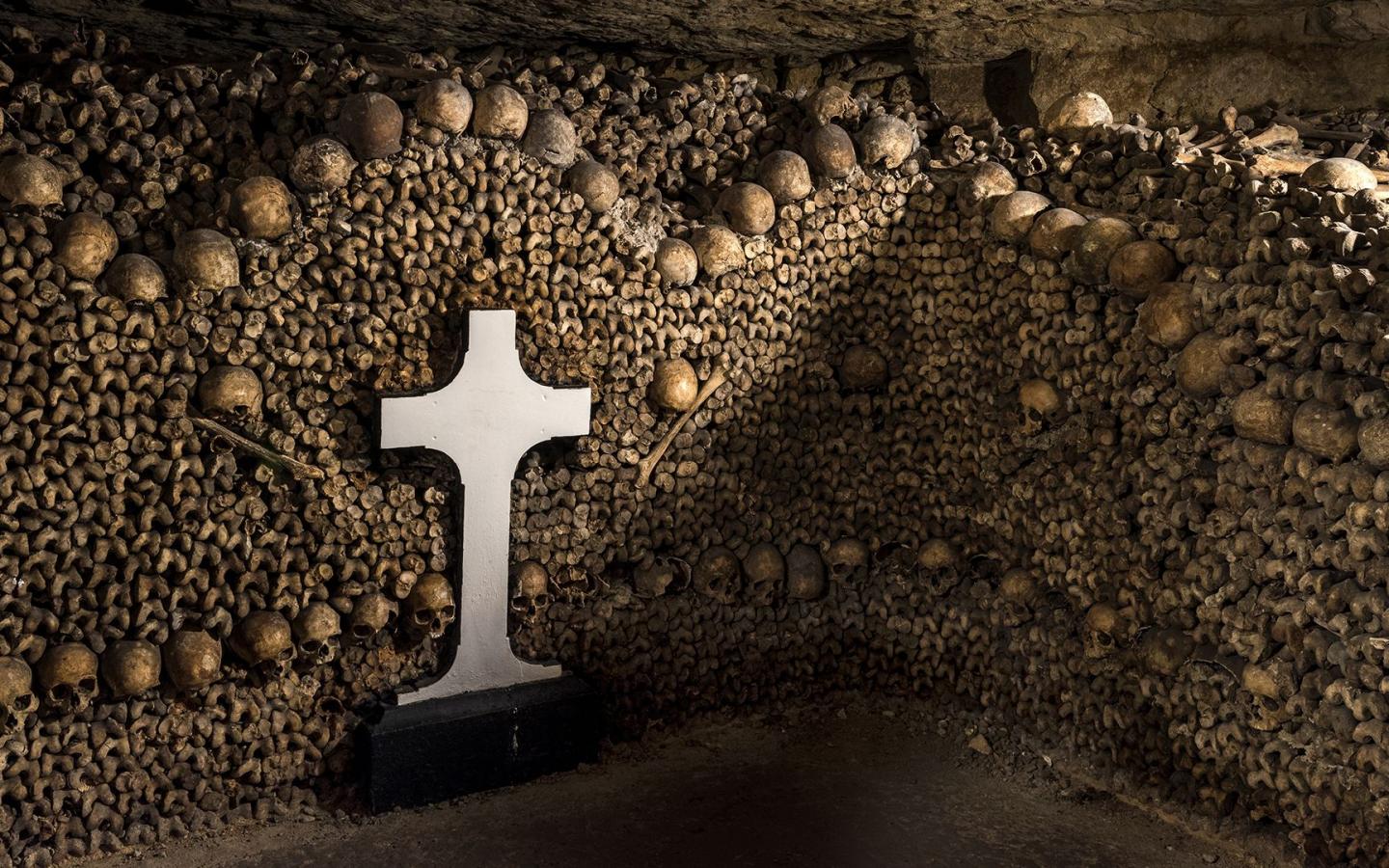
The ossuary
The municipal ossuary in the Paris Catacombs is one of the world’s largest and one of only a handful located underground. Before being opened to the public in 1809, it underwent an extensive decorative rearrangement under the auspices of Inspector Héricart de Thury, who transformed the site using a museographical and monumental approach.
The bones, which had previously been loosely piled, were carefully organized in walls, according to a quarry backfill arrangement. The façade consists of rows of femurs and tibiae alternating with skulls, and the remaining bones were piled behind this wall. They were often only small fragments, as a consequence of their being dumped into the quarry. Masonry monuments in the Antique and Egyptian styles were also installed along the circuit, in the shape of Doric columns, altars, steles or tombs. Certain areas were named after religious, Romantic or Antique sources, such as the Lacrymatory Sarcophagus, the Samaritan Fountain or the Sepulchral Lamp. With the aim of adding an educational aspect to the circuit, Héricart de Thury had two cabinets built in the style of traditional cabinets of curiosities; one was dedicated to mineralogy, the other to pathology. The pathology cabinet showed specimens that referred to bone illnesses and deformations, as established by the research of Dr. Michel-Augustin Thouret in 1789. Another pedagogical tool are the plaques featuring religious and poetic texts that are found throughout the galleries.
They encourage visitors toward introspection and a meditation on death.
The subterranean environment of the Paris Catacombs has been the focus of several studies. Shortly after the catacombs were opened, two researchers from the French Museum of Natural History manifested a special interest. They were Jacques Maheu, a botanist, who studied the flora in this light-free environment, and Armand Viré, a speleologist and naturalist, who discovered the existence of cave-dwelling crustaceans. Héricart de Thury also made an experiment in 1813: he put four goldfish into the basin of the Samaritan Fountain; the fish survived but were unable to reproduce and became blind. In 1861, Félix Tournachon, more widely known as Nadar, experimented during three months with the first shots taken using artificial light. Since the darkness required a very long posing time, the photographer used dummies to represent workers in their environment. Today, pathological research continues when work is undertaken to consolidate the ossuary. Ensuring the preventive conservation of the bones in a very humid underground environment, respecting human remains and promoting the geological, archeological and historical heritage are real challenges for the Paris Catacombs.
A shift in meaning of the term “Paris Catacombs” – the name given to the part of the quarry that was transformed into an ossuary in the eighteenth century – is currently used by extension and erroneously to designate the quarries under Paris and even beyond the city.